Spain’s most beautiful small towns and villages
Pequeno but perfectly formed
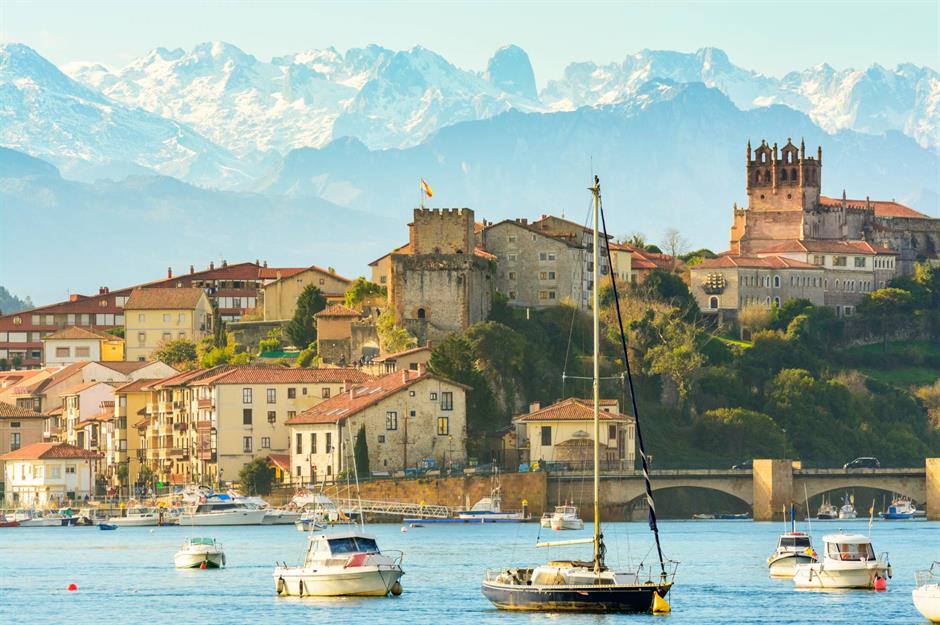
Though it’s hard to deny the intoxicating charms of Spain’s energetic cities, they can often feel crowded and overwhelming. But even in the world’s second-most-visited country, there are plentiful pockets of calm and seclusion to be found off the main tourist trail. From laid-back fishing ports and ancient fortified towns to tiny coastal enclaves and cobblestoned pueblos blancos (white villages), these are just some of the pretty Spanish small towns and villages to save for when the quiet life calls.
Guadalest, Valencia
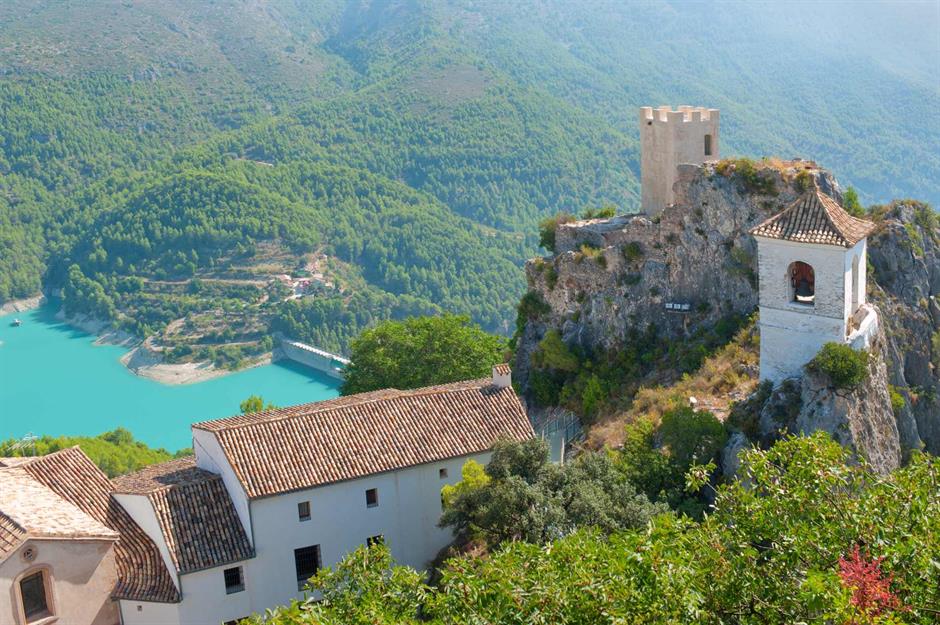
Set among granite mountains above the Costa Blanca, the village of Guadalest (full name: El Castell de Guadalest) overlooks the jade waters of its namesake river and is home to less than 300 people. The Castle of L’Alcazaiba, built during the Moorish occupation of the Iberian Peninsula in the 11th century, still stands at the village’s highest point today, while the oldest part of the medieval settlement can only be accessed on foot via a rock-hewn gateway. Guadalest can easily be visited from the nearby resorts of Alicante and Benidorm, making for a great day trip.
Caravaca de la Cruz, Murcia
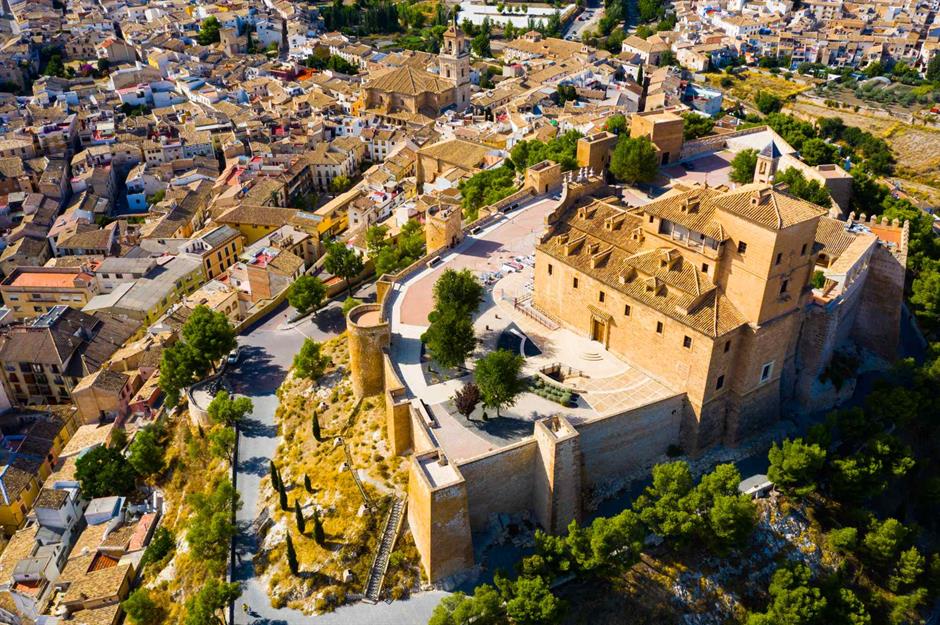
Shaped by the shifting hands of Iberian, Roman and Muslim rule, Caravaca de la Cruz surveys the sweeping plains of Murcia from a hilltop perch. Its squares and winding streets have grown around its 15th-century Knights Templar castle over the centuries, while the small town’s basilica holds a sacred cross, said to possess healing powers. Caravaca remains a place of pilgrimage; visit in early May to experience the Feast of the Moors and Christians, where locals dress in period costume, stage battle re-enactments and celebrate the Caballos del Vino, a UNESCO-inscribed equestrian festival.
Albarracin, Aragon
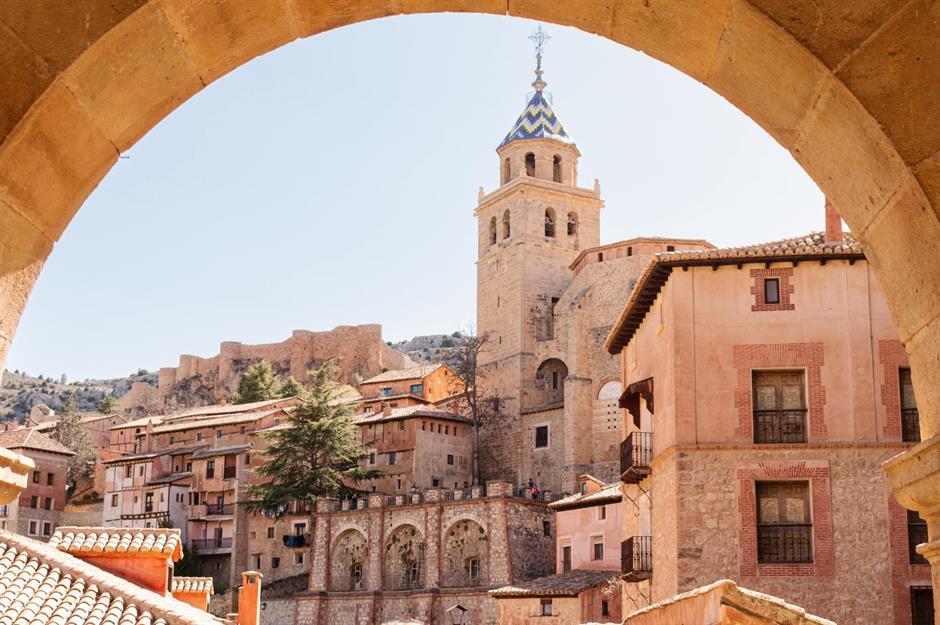
With its rose-coloured houses and yards of ancient walls, Albarracin bounced back from the brink of destruction during the War of Succession and stands today as a picture-perfect patchwork of Islamic and medieval influences. There are both cultural and natural thrills awaiting here: the red sandstone bluffs surrounding the town are siren calls to rock-climbers, while the town’s Diocesan Museum, containing religious relics and intricate flamenco tapestries inside the old Episcopal Palace, is a must-visit for history lovers.
Olite, Navarre

Grey turrets, tiled roofs and the Gothic tower of St Peter’s – the town’s oldest church – dominate the skyline of oatmeal-stone buildings in Olite. Once a seat of power in the historic Kingdom of Navarre, Olite is so small that it can be walked in its entirety in no time at all, but drawing out your visit is effortless enough with streets as gorgeous as these. Be sure to visit the immense Palace of the Kings of Navarre, as well as the town’s museums dedicated to local viticulture and medieval history.
Love this? Follow us on Facebook for more travel inspiration
Sitges, Catalonia

Less than an hour’s drive south of Barcelona, Sitges may be compact – but it more than compensates for its modest size with a big heart. It welcomes city-weary Barcelonians who withdraw here on weekends as well as tourists seeking a more chilled vibe. It's also Catalonia’s go-to nightlife destination for the LGBTQ+ community. Stroll along the promenade, up the steps to the 5th-century Church of Sant Bartomeu and Santa Tecla, and cross into the quaint cobbled lanes of the old town to see this coastal retreat at its finest.
Trevelez, Andalucia
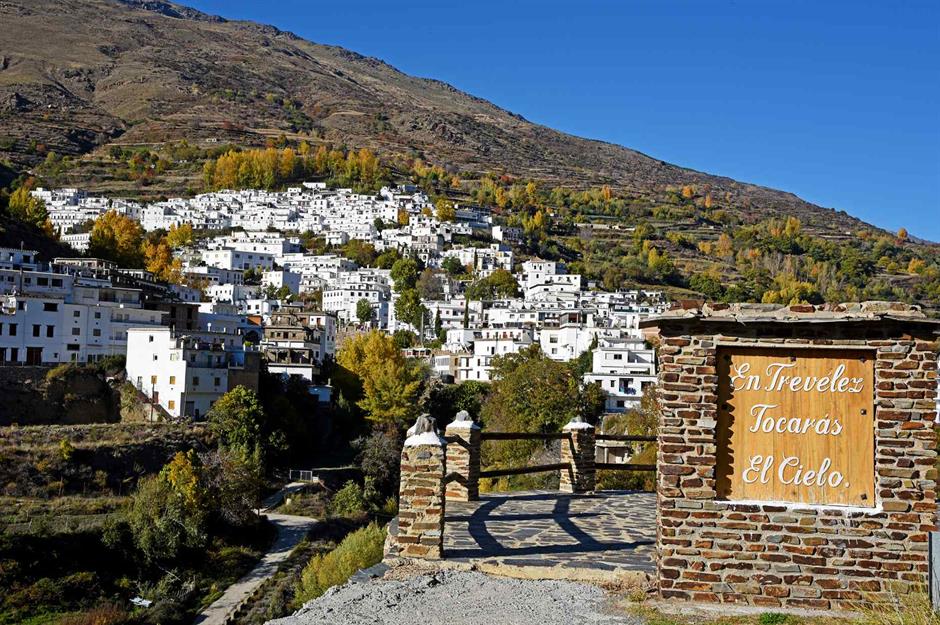
Trevelez is the highest village in mainland Spain and one of the newest additions to the Association of the Most Beautiful Villages in Spain, which promotes heritage municipalities across the country. Its clean mountain air creates the perfect conditions in which to cure the sweet serrano ham this area is lauded for; head to a local bar to taste it for yourself. Divided into low, medium and upper districts, the village is served by the trout-rich waters of the Trevelez River and is a serene base for hikers exploring Sierra Nevada Natural Park.
Cabo de Palos, Murcia
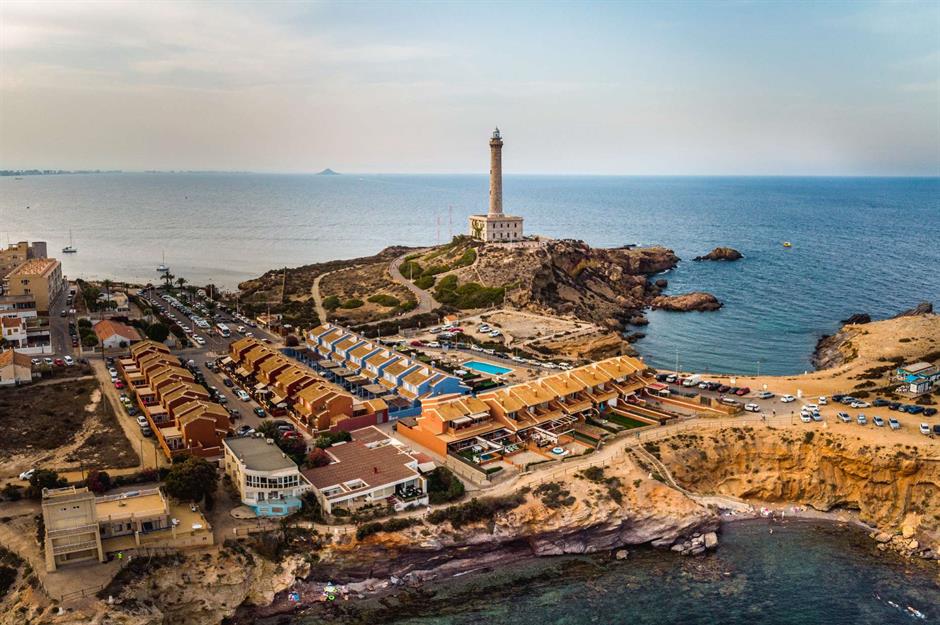
Situated on a small peninsula just off the dramatic coastline of Murcia, Cabo de Palos greets visitors with is its 19th-century lighthouse, which looms over the town. Taking its lead from the Mar Menor, Europe’s largest saltwater lagoon, life at Cabo de Palos has always been intertwined with the water. The local dish, arroz caldero, combines fresh fish and rice cooked in stock. Once a humble fisherman’s supper, it is now recognised as a regional speciality. You may come for the seafood, but stick around for the unrivalled snorkelling and scuba-diving opportunities.
Alcala del Jucar, Castilla-La Mancha
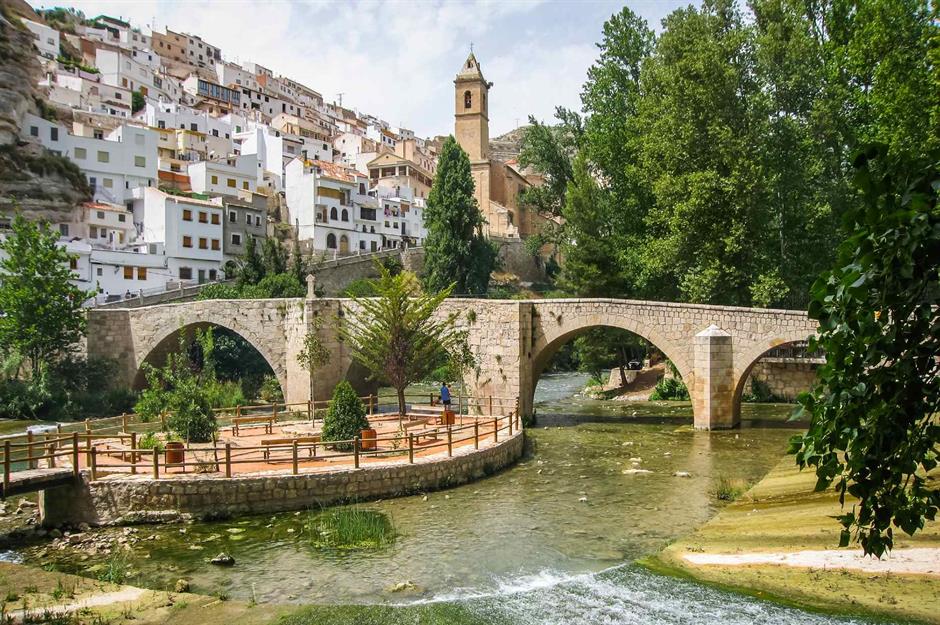
Though one of Spain’s classified Historic-Artistic towns, Alcala del Jucar is actually a riverside village, where houses look to be almost consumed by the white cliffs that cascade down to the water’s edge. Its most striking feature is a Roman bridge over the river gorge – from its western side rises the rocky outcrop of the labyrinthine village, crowned with its Arabic fortress. The Church of San Andres is another must-see landmark.
Valldemossa, Mallorca
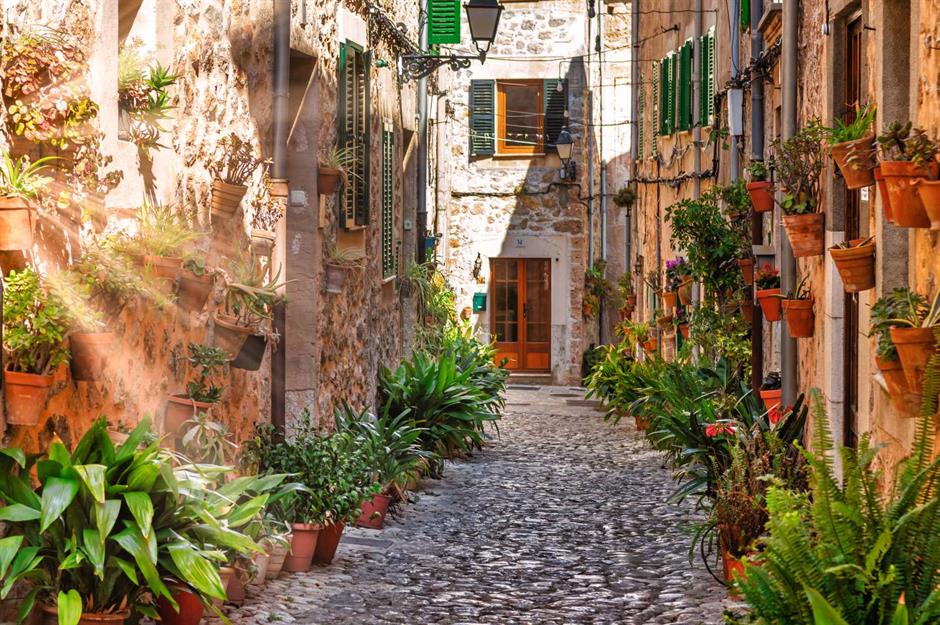
Cradled in a valley within the Tramuntana mountains, Valldemossa captures the old-world romance of rural Mallorca. Travellers aren’t the only ones who find themselves enamoured with this village, which is all blonde cobbled paths, countryside views and stone terraced cottages. Polish composer Chopin famously spent time in Valldemossa, and to this day there are frequent concerts of his musical masterpieces here. At the Royal Carthusian Monastery (Real Cartuja) – today an eclectic museum – you can see the cell where Chopin used to board, as well as artworks by Picasso, Joan Miro and more.
Olivenza, Extremadura
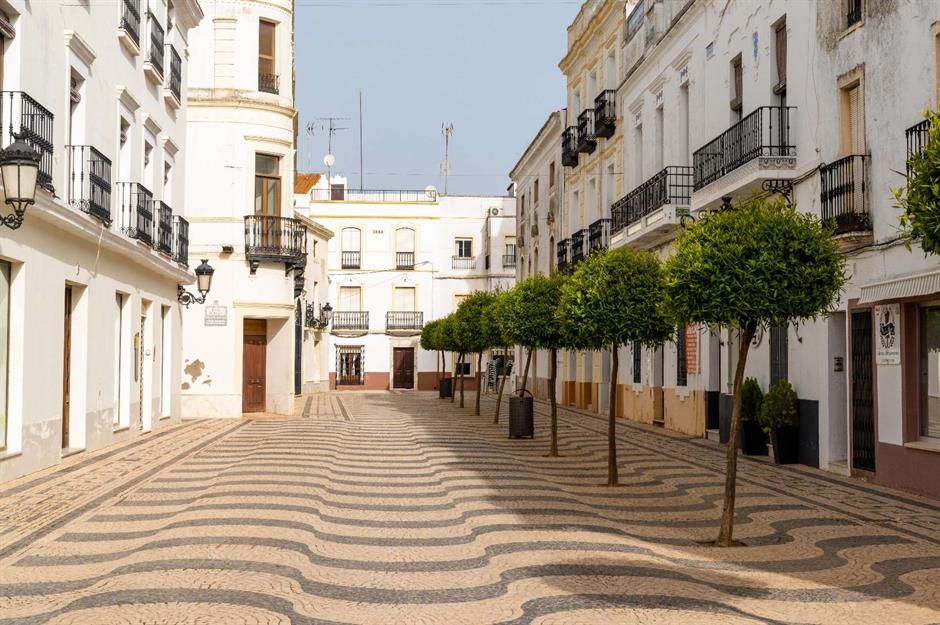
Prior to 1801, Olivenza wouldn’t have made this list – because it was part of Portugal. Though signed over to Spain following the War of the Oranges (the prelude to Napoleon's occupation of Iberia), true ownership of the town has been disputed for centuries. Formally administered by Spain, Olivenza has become a melting pot of the two cultures and still honours its Portuguese heritage. It was originally founded by the Knights Templar and you can expect to find old town walls and many time-worn religious buildings among its monuments.
Binibeca, Menorca
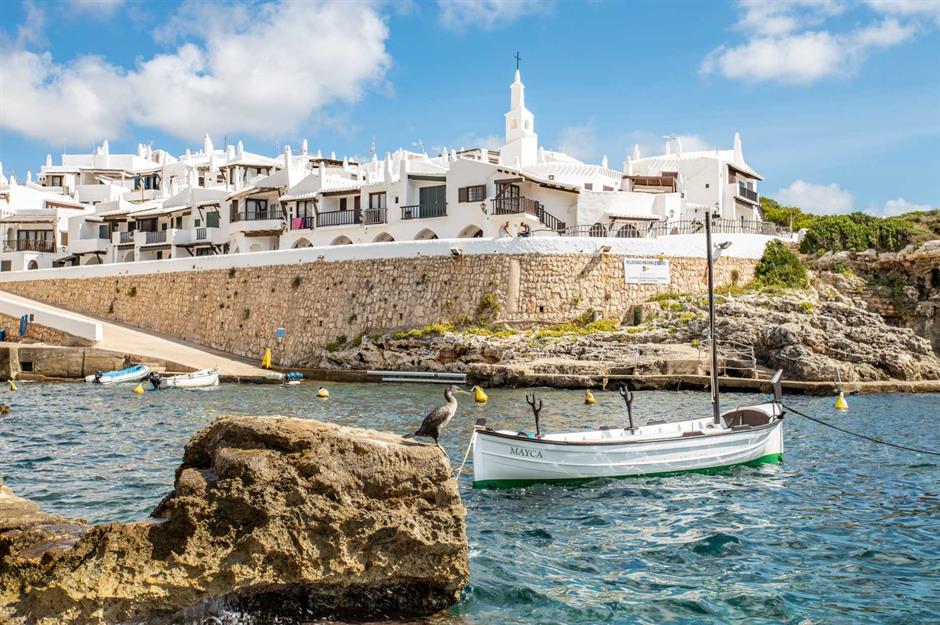
Glowing in the Mediterranean sun, Binibeca is a town of two halves located on the southern shores of Menorca, one of the islands in Spain’s Balearic archipelago. Binibeca Vell is the original part of the settlement, built only as recently as the 1970s by the architect Antonio Sintes and designed to imitate a traditional whitewashed fishing village. Binibeca Nou is the newer side of town, its villas and houses continuing the timeless style of Binibeca Vell with views over a pine-fringed beach.
Peniscola, Valencia
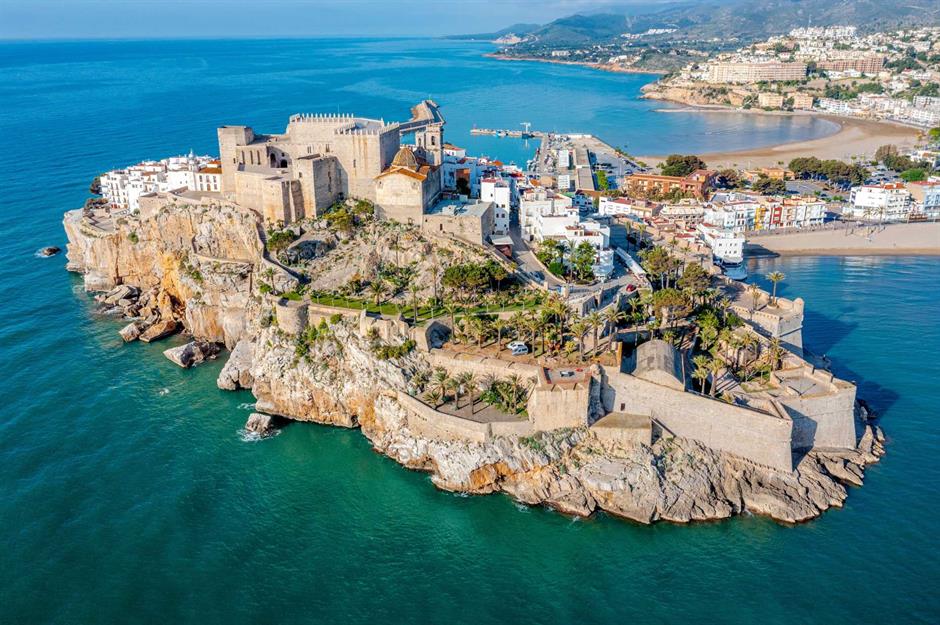
Spain’s answer to France’s Mont Saint-Michel, Peniscola is a fortified town on a headland of the Costa del Azahar, or Orange Blossom Coast. Utilising the foundations of an earlier Moorish citadel on the site, the Knights Templar were commissioned to build a fortress of their own here at the turn of the 14th century. The castle, occupying the highest point of the promontory today, is the best place to catch views over the Castellon coastline. Peniscola was also used as a filming location for Game of Thrones.
Cadaques, Catalonia

This fishing town on the Costa Brava has long been the preferred haunt of inspiration-seeking artists such as Dali and Picasso – and you don’t have to look hard to see why. Visitors can admire the historic landmarks and museums of the old town before shopping in locally owned boutiques, basking on the beach, or enjoying traditional Catalonian cuisine at a portside restaurant. The people of Cadaques are fiercely proud of their Catalonian heritage, with the town even having its own variant of the Catalan language.
Santa Gertrudis de Fruitera, Ibiza
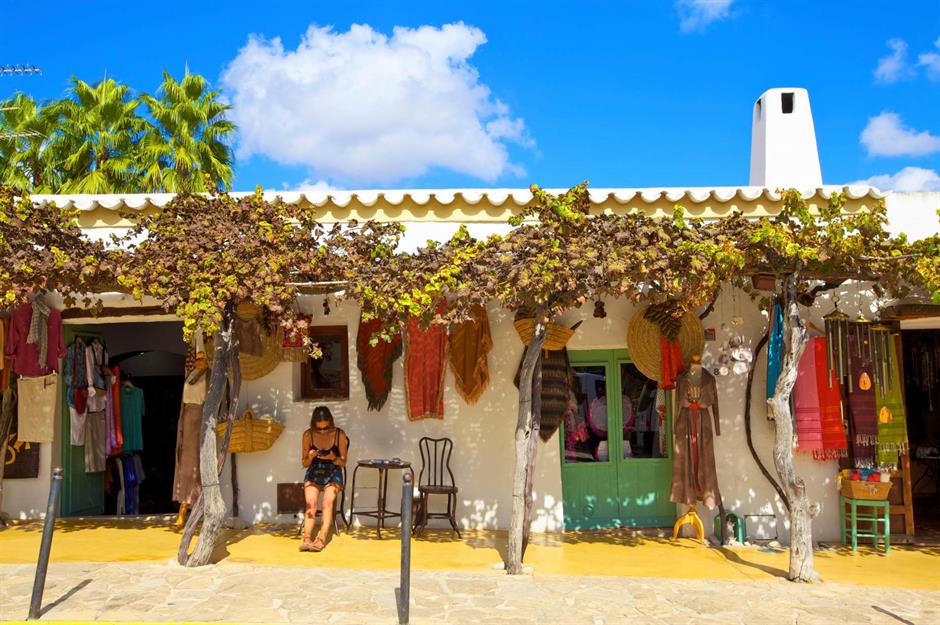
Surrounded by countryside vibrant with fruit trees and described as “the Notting Hill of Ibiza”, Santa Gertrudis is a small traditional village where the echoes of a 1960s hippie community blend with contemporary cultural influences. Proving that there’s more to the notorious party island than brash resorts and superclubs, this little Ibicenco idyll has art galleries, trinket shops stocked with the handiwork of local makers and cosy cafés facing out onto a church square. It is, and always has been, a haven for creative travellers and foodies.
Setenil de las Bodegas, Andalucia

One of the most notable pueblos blancos of Andalucia, Setenil de las Bodegas has much more to marvel at besides the emblematic white paint. This small town with barely 3,000 residents partly consists of cave dwellings built under and into a deep canyon. Though the bodegas (wine stores) that gave the town its name are far fewer than they used to be, local delicacies such as almonds, olives and chorizo remain deliciously abundant. Seville, Malaga and Cadiz are all less than two hours away by car.
Alquezar, Aragon

On a limestone outcrop in the foothills of the Pyrenees, Alquezar was founded around a Moorish citadel in the 11th century. While the architecture tells that particularly story, Vero River Cultural Park unearths another, far more ancient one. Designated a World Heritage Site, it is home to prehistoric cave art dating back to Paleolithic times. The picturesque village also falls within the Sierra y Canones de Guara Nature Reserve, so outdoor adventurers can base themselves here while on hiking, mountain-biking, horseback riding, canyoning and rock-climbing trips.
Briones, La Rioja
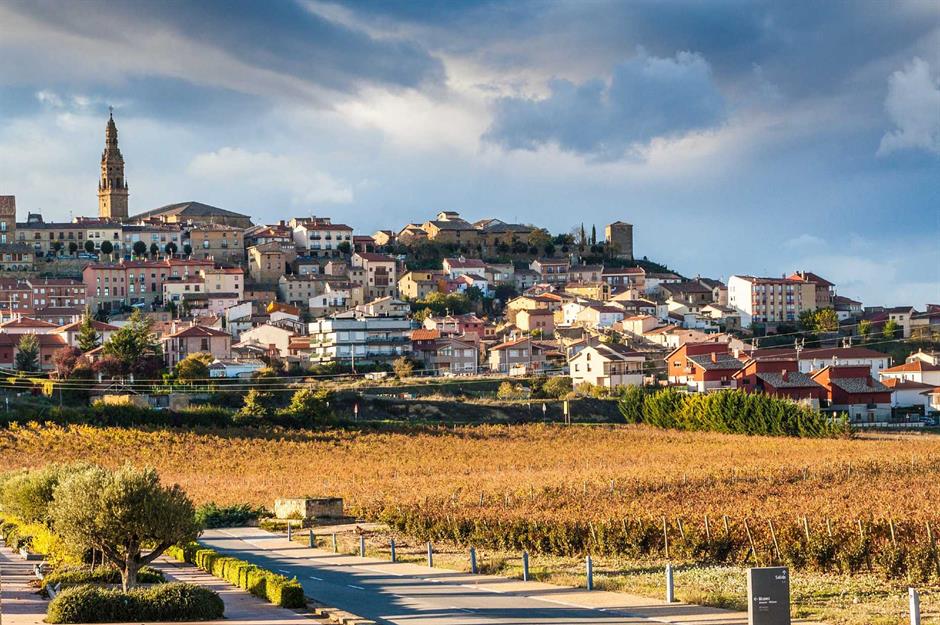
This hillside village in the midst of rich winelands is the stuff of fairy tales. Legend dictates that Briones was named after the area’s original occupants, the Berones – Bronze Age nomads who preceded the Romans. Its mix of traditional ashlar stone and half-timbered buildings, with their small balconies and Gothic details, hark back to a bygone era that feels very much alive in this historic enclave. Aside from admiring the impeccably preserved medieval architecture, visitors come to Briones to taste some of the best and oldest wines from the Rioja Alta sub-zone.
Baiona, Galicia
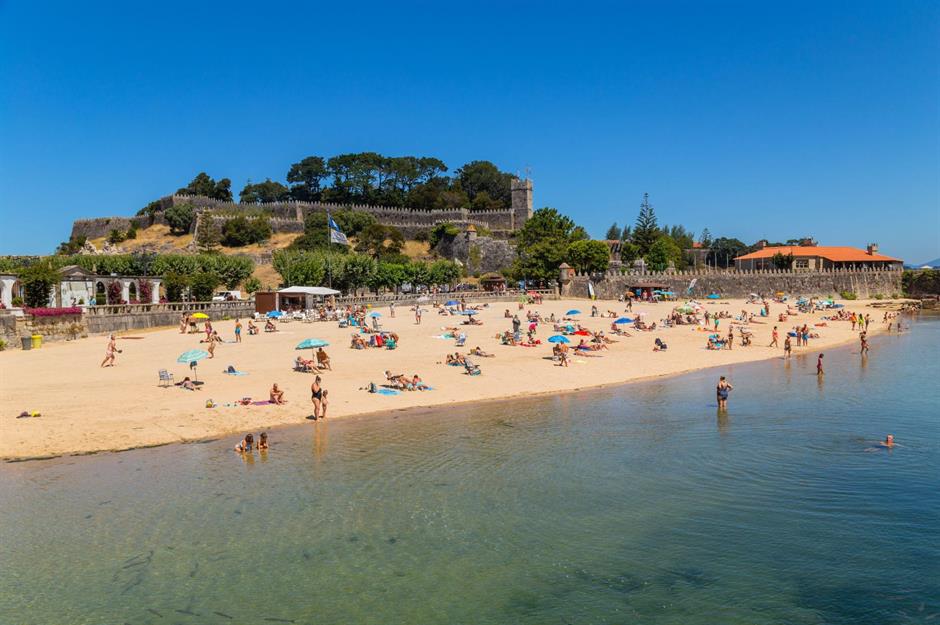
Baiona has a fascinating history. It became the first port to hear of Christopher Columbus’ 'discovery' of America when his ship, La Pinta, landed here in 1493, an event commemorated every first weekend in March with the Fiesta de la Arribada. Sail these momentous waters yourself on a voyage to the Cies Islands; ferries run out of Baiona daily during high season. Staying the night? Try the 19th-century manor hotel Parador de Baiona, housed within the ruins of a medieval fortress that was built to deter pirates and conquerors.
Christopher Columbus' Santa Maria and more ships that vanished without trace
Ainsa, Aragon

The tiny Pyrenean village of Ainsa lies near the border between Spain and France. It was once the capital of the Kingdom of Sobrarbe, but its meandering medieval streets have long since outlasted that ancient realm. Visitors to the village’s historic quarter can explore the Romanesque Church of Santa Maria and the 11th-century citadel (built to defend the settlement against Moorish advances). One of Aragon’s most prestigious summer festivals also takes place here – the Ainsa Castle International Music Festival, while September sees the celebration of La Morisma, a famous battle re-enactment.
Besalu, Catalonia

As travellers cross the 12th-century bridge into the heart of Besalu, a vision of what Catalonia would have been like in the Middle Ages will just be starting to form. From here, an intriguing tangle of streets lead onto the town's many other historic monuments, including a complex of medieval public baths in the Jewish Quarter and the Church of Sant Julia. Besalu, designated a Spanish historic national property, also stands on the edge of La Garrotxa Volcanic Zone Natural Park. With more than 20 lava flows, it's the best example of volcanic geology on the Iberian Peninsula.
Cudillero, Asturias
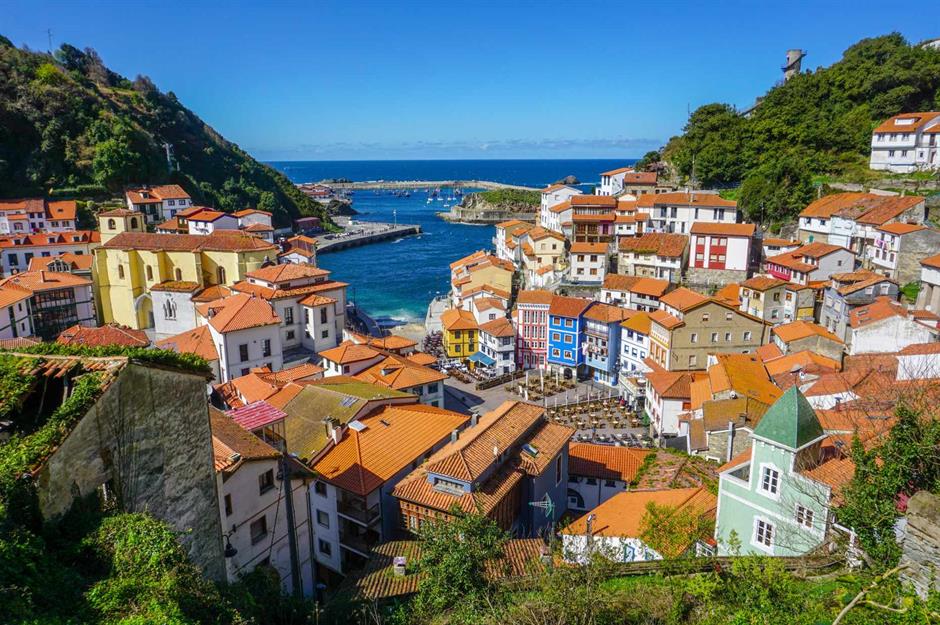
One of the prettiest fishing villages in Asturias, Cudillero is a bright smudge of colourful homes set between (and, in some cases, on) a leafy cliffside and an inlet of the Bay of Biscay. Around its port, you’ll encounter atmospheric smells of fresh seafood being prepared at traditional taverns, tantalising enough to convince you to stay for dinner. Make sure you get out into the surrounding area too, where beaches, waterfalls, meadows and mountains abound. For a slice of unique culture, don’t miss L'Amuravela Festival, which celebrates the local pixueto language and fishing heritage of the town.
Lekeitio, Basque Country

Located in Spanish Basque Country, Lekeitio historically made its fortunes in the whale-hunting trade, which dissolved around the 18th century. These days, the town is recognised mostly for its sandy beaches and pintxos bars. As the tides change here, so does access to the island of San Nicolas, which can only be walked to during low tide. Halfway between the stunning but tourist-heavy cities of San Sebastian and Bilbao, Lekeitio allows travellers to soak up Basque culture and cuisine at a gentler pace.
Potes, Cantabria
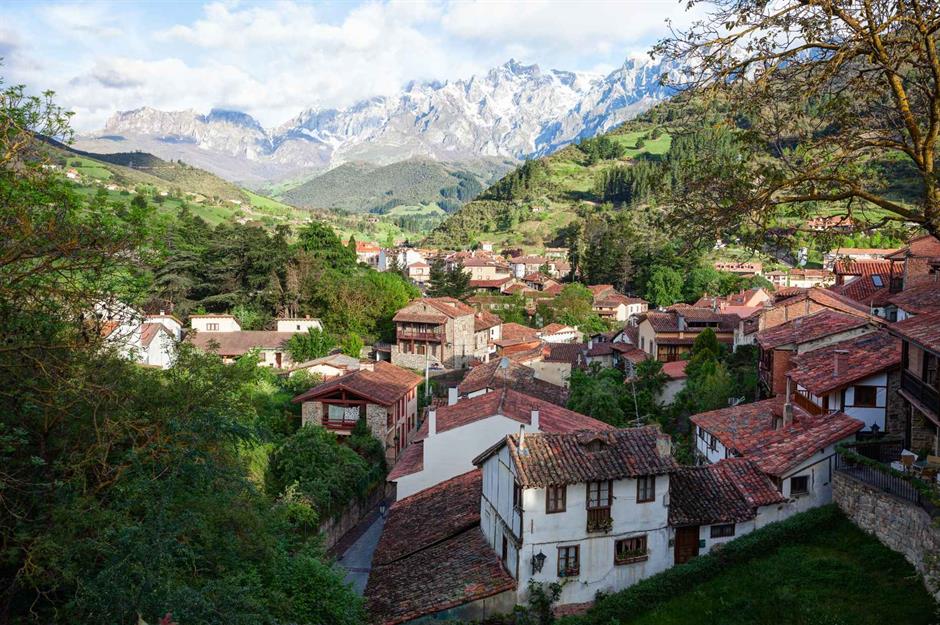
Nested in the historic Liebana region within Picos de Europa National Park, Potes is a small medieval town at the confluence of the Deva and Quiviesa rivers. Here, a network of stone bridges knit the valley together, which is marked by warrens of attractive old streets. Though far-removed from the powerful 13th-century city it once was, Potes has retained a distinct elegance, evident in its age-defying architecture. While you’re in town, try the local delicacies: wholesome Liebana meat stew and orujo, an artisanal brandy-like liquor with its own festival held during the second weekend of November.
Frigiliana, Andalucia
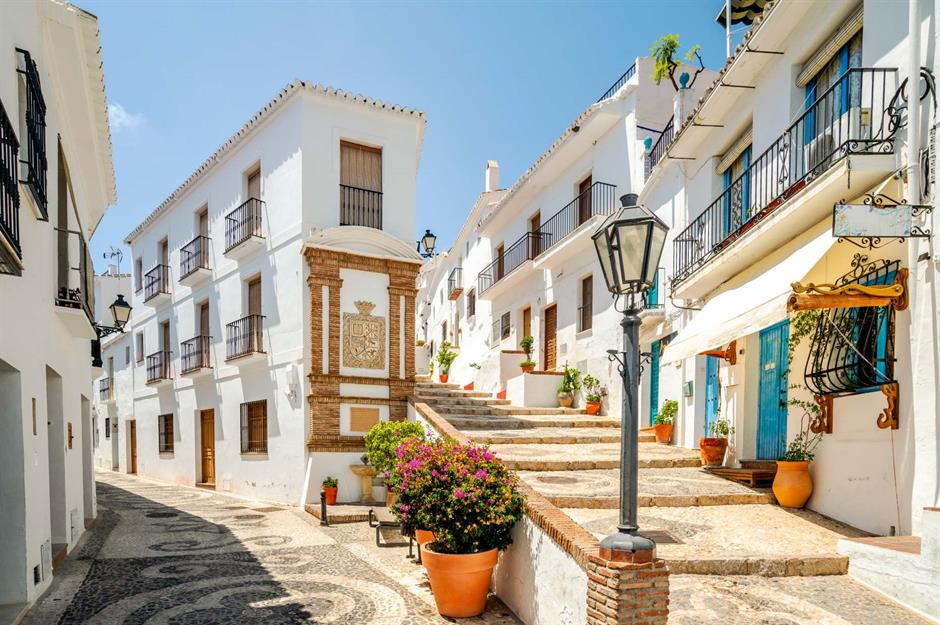
Clinging to the slopes of the Sierra Almijara above Malaga, quintessential Andalusian pueblo blanco Frigiliana is one of the most beautiful spots accessible from the Costa del Sol. It’s not just a pretty face though – Roman and Muslim origins shine through in the town’s infrastructure, architecture and cuisine, while a handful of attractions also document its later history. Visit the Palace of Condes (or El Ingenio), a former mansion from the Renaissance era that is now the only factory in Europe to make molasses.
Combarro, Galicia

Combarro belongs to the Rias Baixas, an area of Galician coast painted with numerous estuaries to create a gorgeous and unusual landscape. The village’s historic centre, designated a Property of Cultural Interest, exemplifies the design of seafaring settlements typical of the region with its horreos (raised grain stores) and casas marineras (sea houses – traditional seafood restaurants). This maritime heritage is celebrated in the Virgin of El Carmen festival every July, where boats are adorned with flags and floral tributes, while an annual mussel festival takes place in August.
Deia, Mallorca
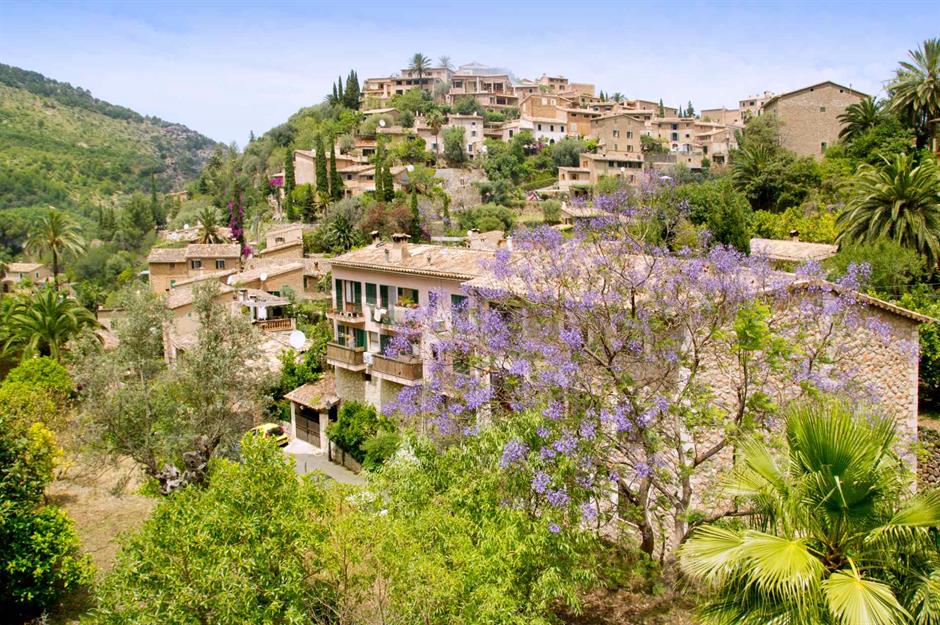
Long adored by celebs and artists, this lovely Mallorcan village is home to luxury hotels such as Belmond’s iconic La Residencia, as well as a slew of galleries and craft shops. English poet and novelist Robert Graves, along with the likes of Andrew Lloyd Webber and Bob Geldof, are just some of the creative types known to have frequented Deia. Spend long enough here and you’ll be leaving full of inspiration too.
Cuenca, Castilla-La Mancha
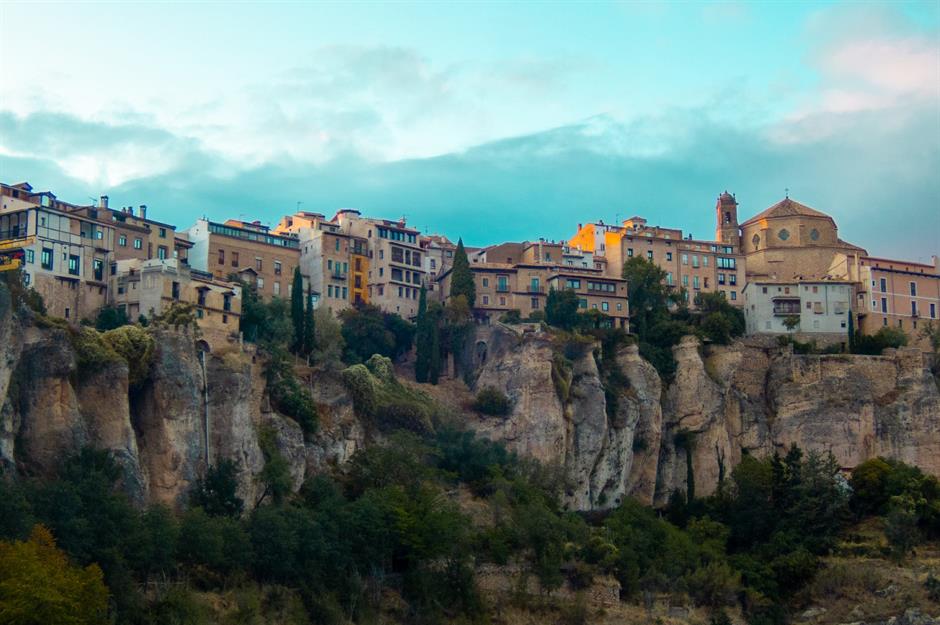
Dressed in a pleasing palette of ochre and terracotta, this astounding village and UNESCO World Heritage Site almost defies description – and gravity... Precariously stacked atop a steep ridge where two river gorges meet, Cuenca’s most noticeable feature is a stretch of casas colgadas (hanging houses) whose vertigo-inducing balconies peer into rocky depths. One of these houses has now been converted into the Museum of Abstract Art, combining two incredible attractions – and two contrasting eras – in one.
Zafra, Extremadura

Zafra, or ‘Little Seville’ as it is routinely termed, shares many of the same attributes as its big sister; Arabesque details in its columns and alcoves, historic plazas, and even its own Alcazar. But the town also has an eclectic character of its own, shaped by as many rulers as it has had names: the Iberians called it Segida; the Romans Julia Restituta; and it was Zafar or Safra to the Moors. Today, the medieval quarter is the town’s most memorable part. Its streets wrap around the 15th-century fortress in a pattern that resembles a turtle shell.
Ronda, Andalucia

The largest pueblo blanco in Andalucia is also objectively its most extraordinary. Separated by the Tajo gorge until the Puente Nuevo bridge united both sides of the town in the 18th century, Ronda sits astride the Guadalevin River canyon at the top of two rugged escarpments. From bandits and bullfighters to warriors and writers, all manner of colourful characters have passed through its ancient streets and embroidered their stories into the fabric of the town. According to local folklore, it rains upwards in Ronda, but luckily there are plenty of museums, tapas bars and Arabic baths to shelter in if it does.
San Vicente de la Barquera, Cantabria
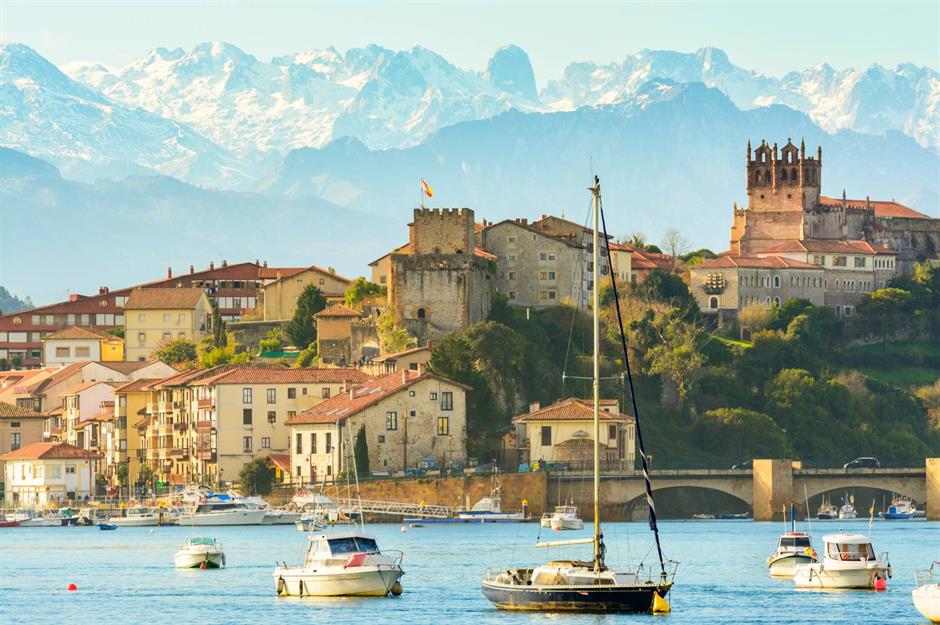
With the snow-coated peaks of Picos de Europa to one shoulder and the waters of the Cantabrian Sea to the other, San Vicente de la Barquera really does embody the best of both worlds. It oozes medieval majesty; there’s a castle, remnants of an old town wall, and the 28-arch Puente de la Maza bridge, which reaches over half a mile (0.8km). To taste the spoils of the town’s maritime setting, seek out some sorropotun, a tuna and potato hotpot.
Now read on for the most charming small towns and villages in Ireland
Comments
Do you want to comment on this article? You need to be signed in for this feature